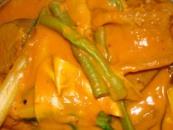Technically speaking, local food refers to regionally or locally produced food. Buying food products from mass scale producers is one thing, but in recent years we have seen a major awareness and local food movement to give more importance to locally manufactured food products. This movement lays importance on economic and environmental benefits associated with local food as well as its general health benefits to the consumers.
Buying from Local Markets
Believe it or not, transportation distance for local food is on an average 1500 miles lesser than the distance crossed by food products from mass scale producers. Farmers and local producers are now encouraged to sell their produce in large quantities directly to big supermarket chains or these products are made available on retail basis in many smaller outlets as well. One of the most popular variety of foods available in local foods includes organic food products, organic dairy products, organic poultry, organic meat and fish, etc.
Economic Benefits of Local Food
Buying and selling of local food is beneficial not only to the producers and buyers but also for the nation as a whole. With a rise in local food movement, there is a sharp rise in demand for organic food products. The total sales doubled in a span of 4 years from $3 bn to approximately $6 bn by the end of 2006. This gives an assurance of ready markets to the local producers. Local food manufacturers have reported that selling their produce to local supermarkets is more viable than selling products to local farmer markets. Similarly local food purchases happen to be cheaper because there is slashing of expenditure on transportation and warehousing. As far as the national economy is concerned, there has always been an impetus to local food markets since it helps to curtail the drainage of cash reserves on account of import payments. By year 2007, producer to customer sales of local foods accounted for approximately 0.4% of the total sales. Increasing popularity of local food has created a sharp increase in job opportunities in this field too.
Environmental Benefits of Local Food
Local foods are produced keeping in mind the environmental sustainability issues. Here, farming activities take place without usage of any chemical fertilizers, hybrid seeds or chemical pesticides. A natural farming method devoid of any contamination of fertile soil is the main plus point of local food as it helps to keep land pollution under check. This also has long term benefits to the health of the consumers. Similarly, there is a sharp fall in transportation distance between farm and consumer's kitchen. This helps reduce carbon emissions that contaminate the air during transportation. Some biodiversity issues give a 'thumbs up' to local food. This is because food products like fruits and vegetables manufactured under commercial agriculture banner use hybrid varieties of plants for faster and larger quantity of food production. These hybrid plant varieties may yield larger quantities but nutritional value of these products is poor.
Health Benefits of Local Food
The quality and health benefits of local foods are so high that many of us keep wondering as to why we stopped their consumption in the first place. It is like looking out for health and nutrition all around the world and then discovering that, all that you wanted was right there in your backyard. Local food products are definitely fresher due to their proximity of farms to their markets. Similarly, consumers vouch for their better taste too. There are no traces of artificial fertilizers in these foods, thereby making them safer for human consumption. Organic meat and poultry products are produced, keeping in mind animal welfare. Organic poultry farms are maintained without the usage of harmful chemicals.
Rising Local Food Movement
Local food movement is also known as food patriotism. While all those people who stress on consumption of local food are known as localvores. Here's more...
- There has been an increased awareness about local food movement since the past 10 years. Many local manufactures pack their food products with specific tags stating 'Certified Organic'. Many supermarkets have demarcated sections or aisles specifically selling organic food products.
- We can see a steep rise in farm to school sales for school meal programs with numbers having crossed 2000 schools by the end of year 2009.
- There is a growing importance for organic milk products with dairy industries engaging in maintenance of organic pastures for producing better quality milk.
- New York state has even passed a legislation in the year 2001 stating "The legislature hereby finds and declares that farmers' markets provide a vital and highly effective marketing mechanism for thousands of New York farmers, improve the access of consumers and wholesalers to New York farm products, and contribute to the economic revitalization of the areas in which the markets are located."
- A closely related but a sister sector of organic food farming is growing importance of organic clothing wherein natural fibers like cotton are produced by strictly following organic practices.










